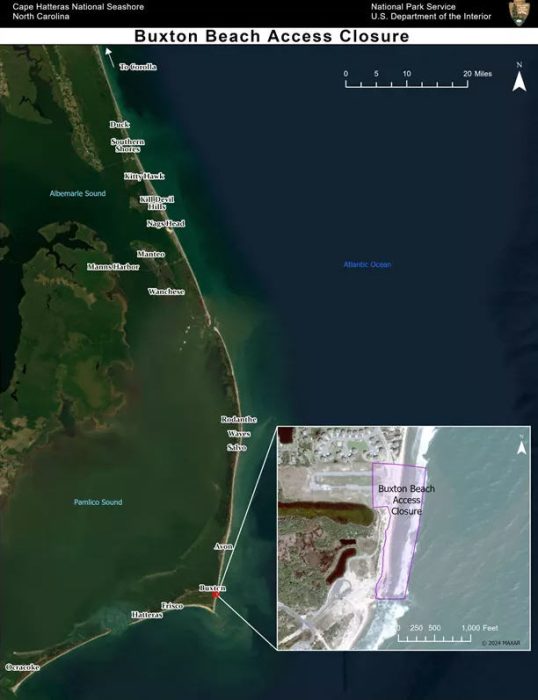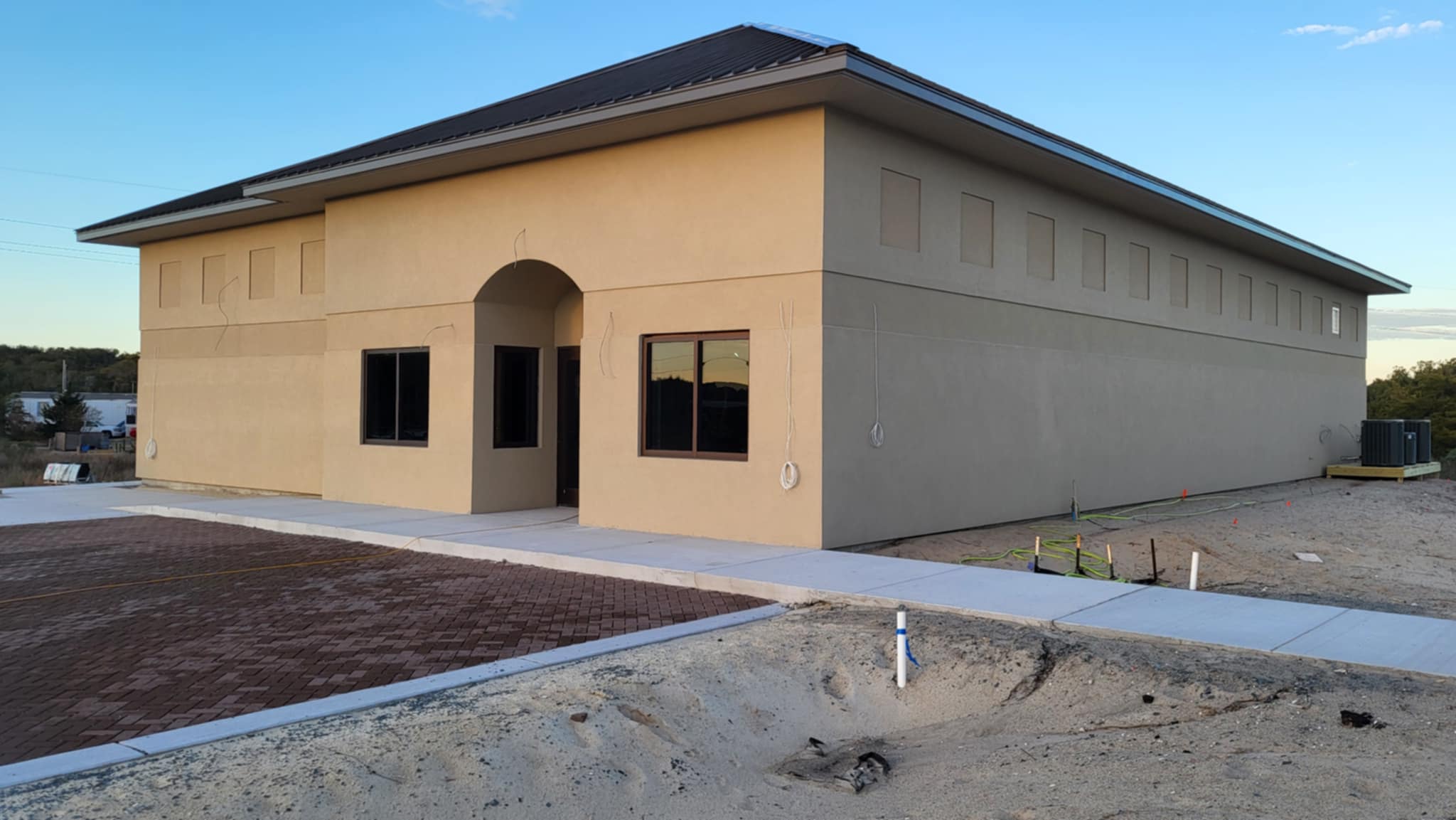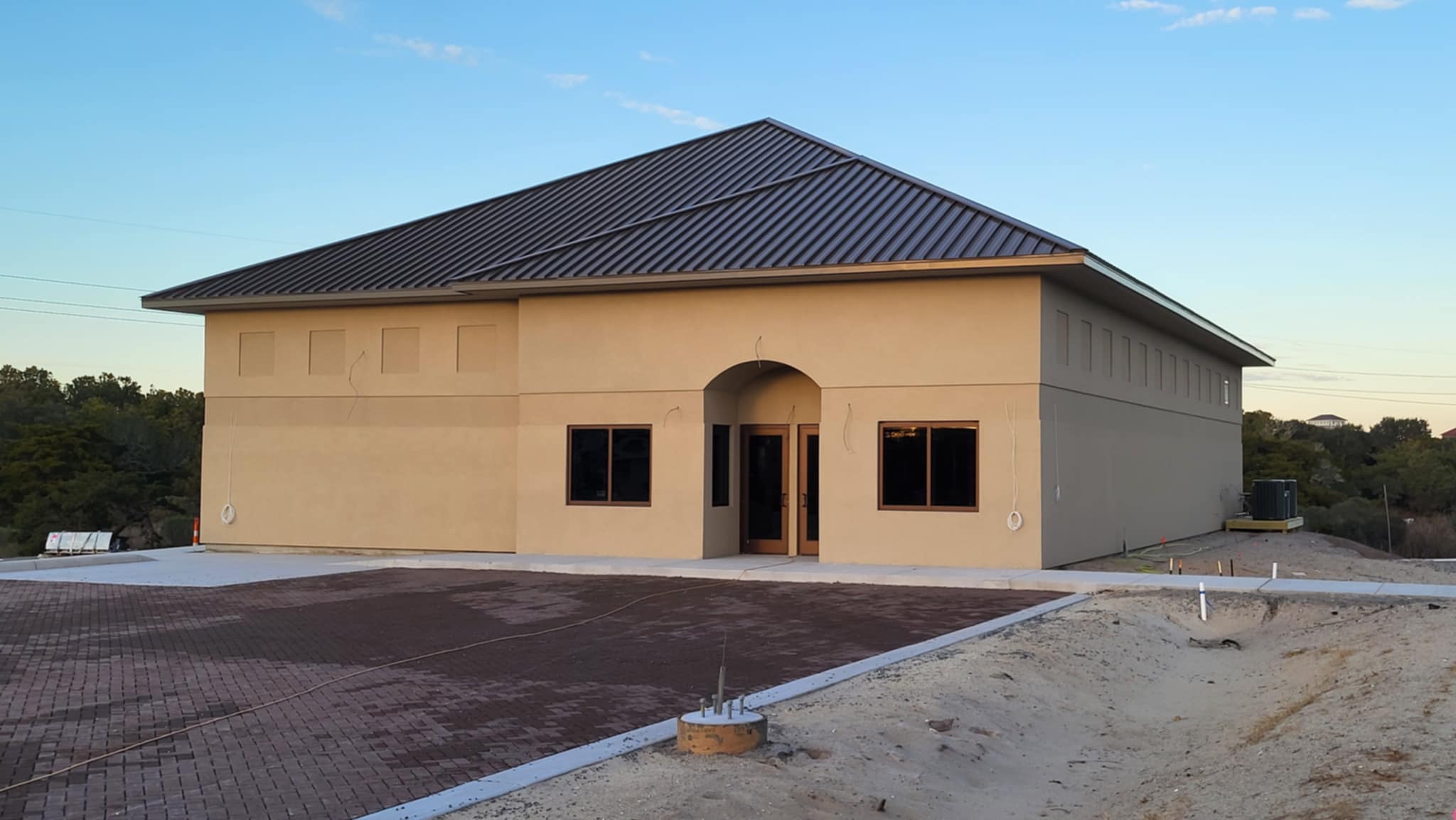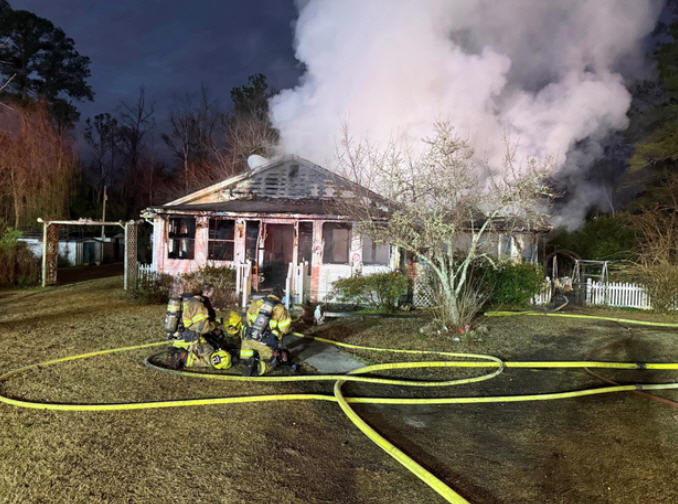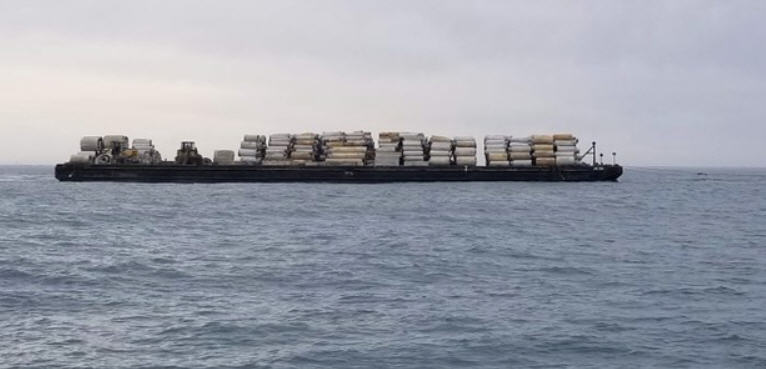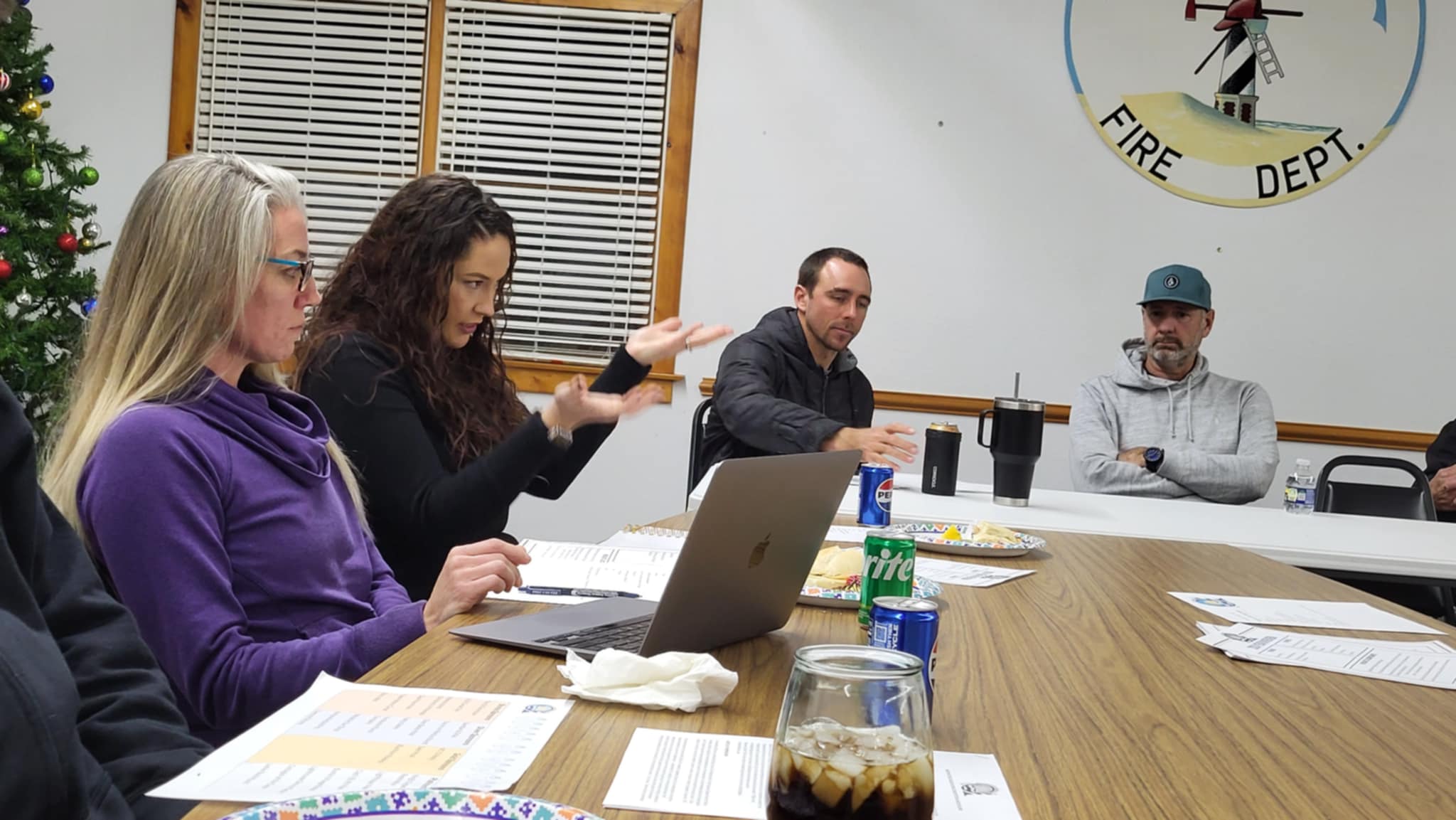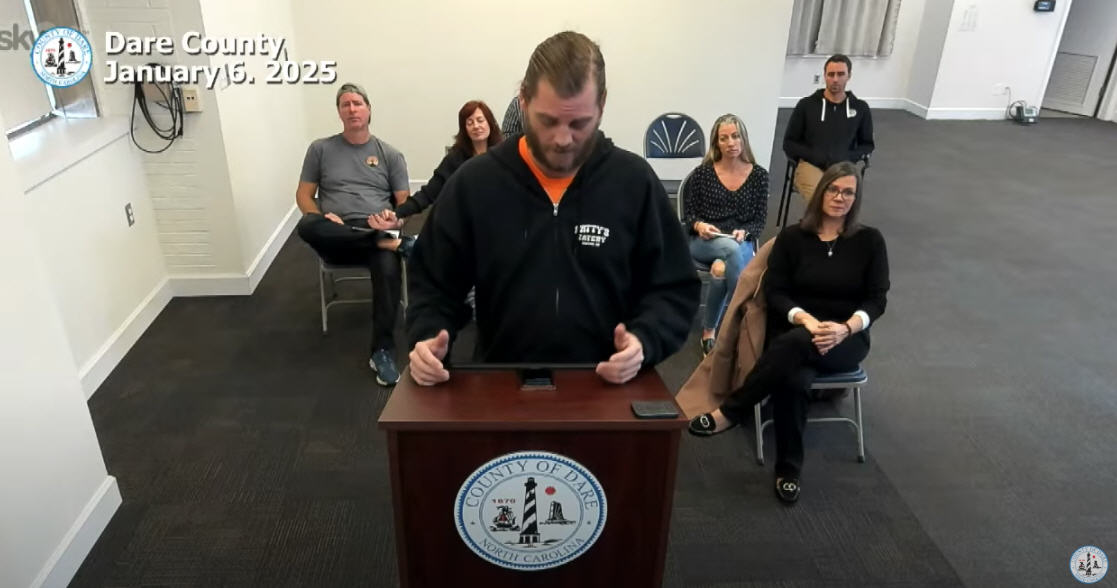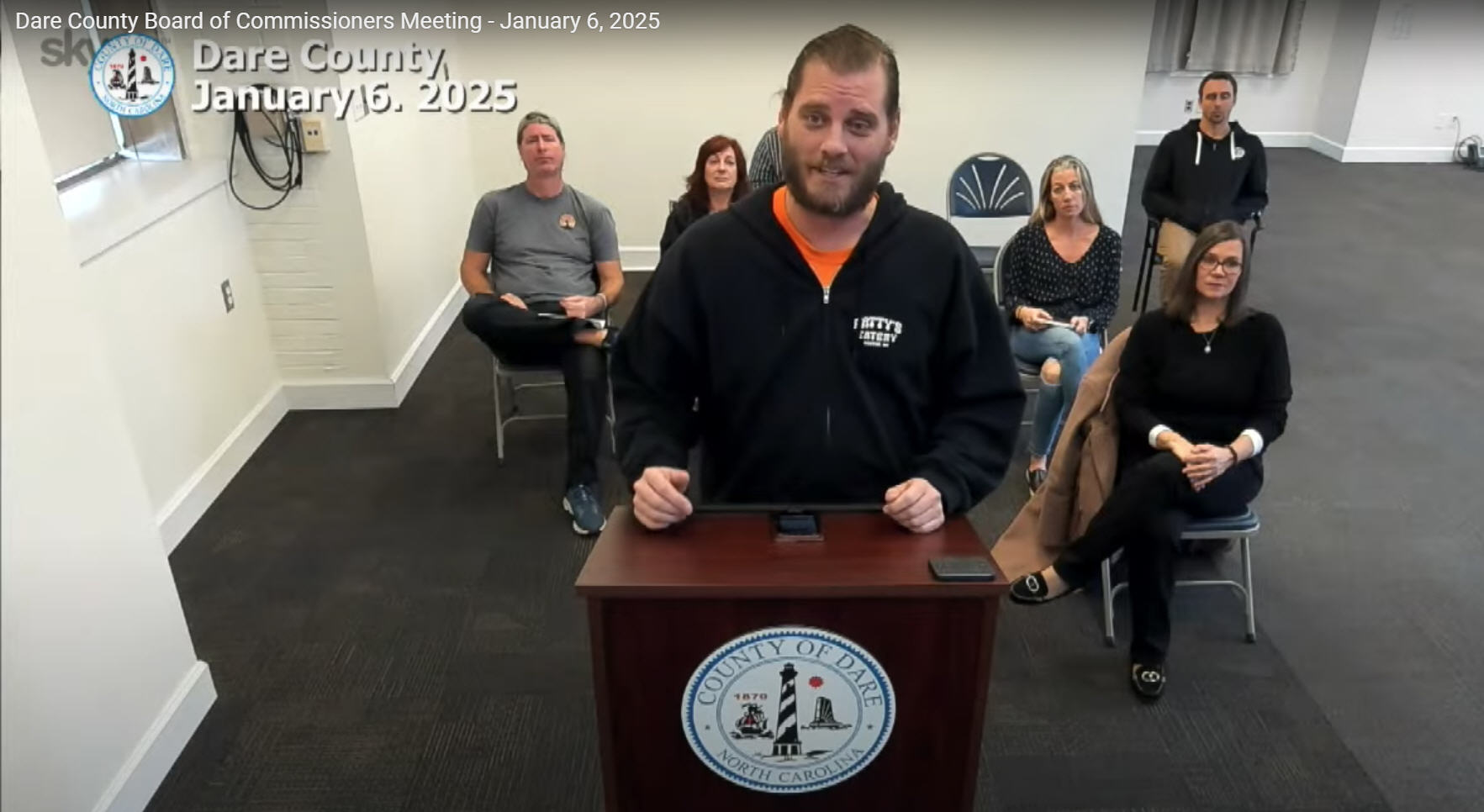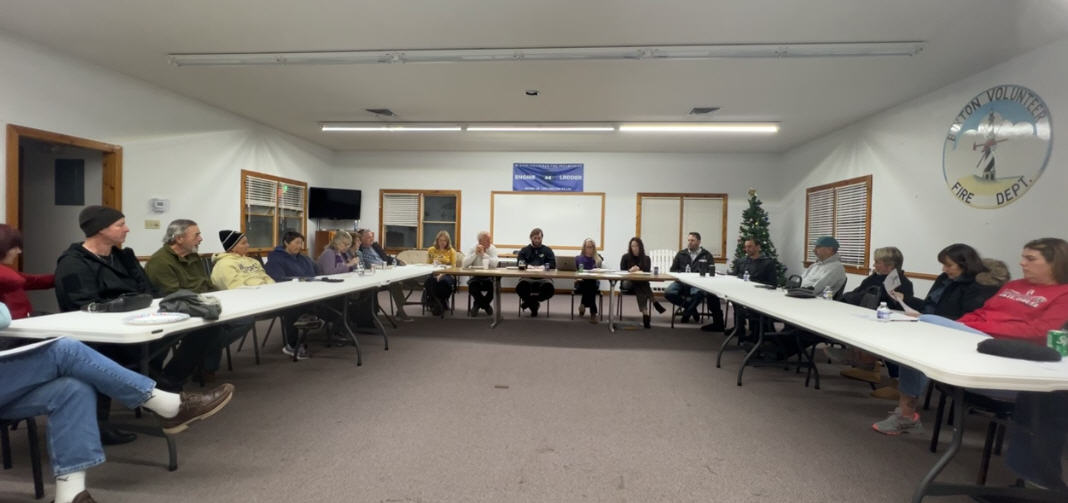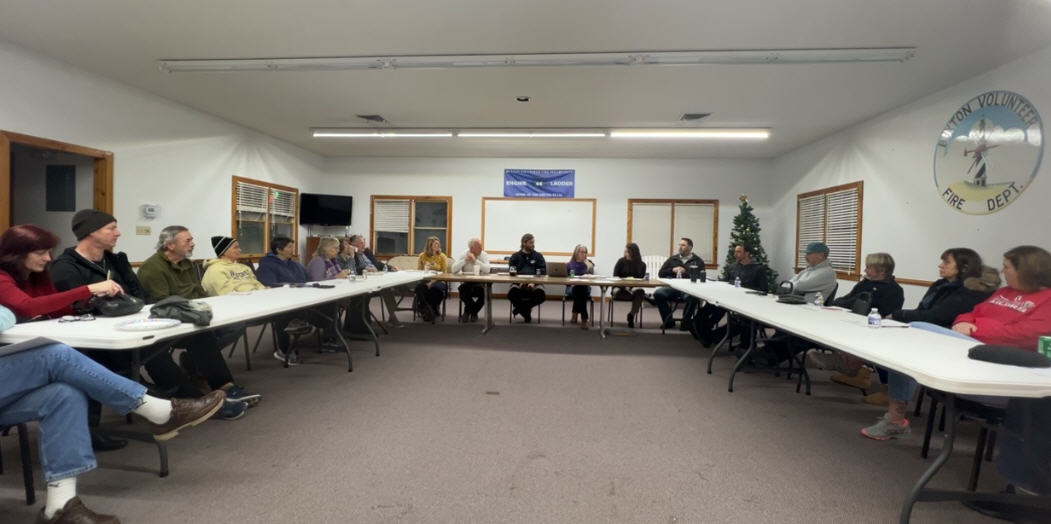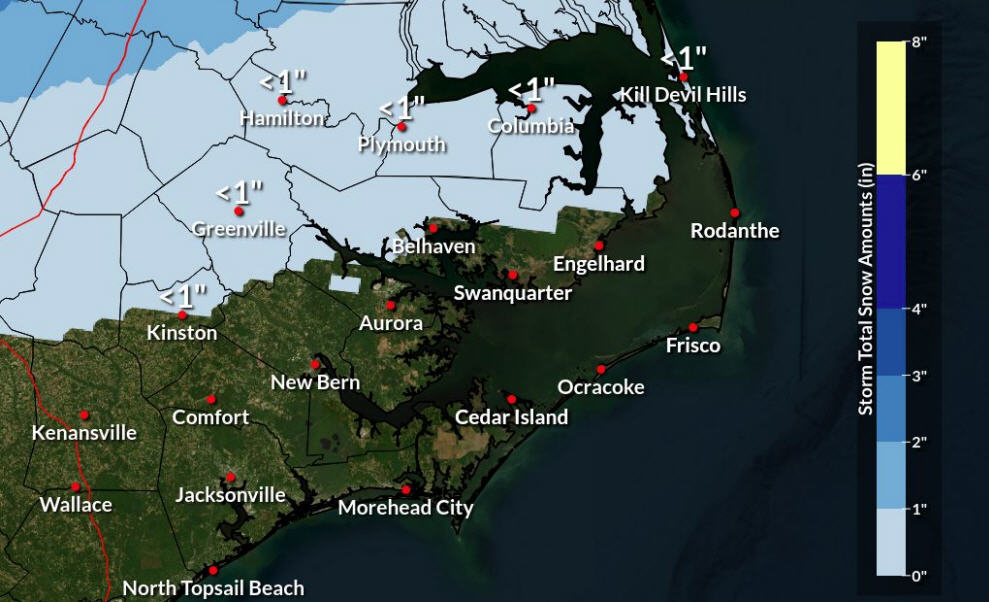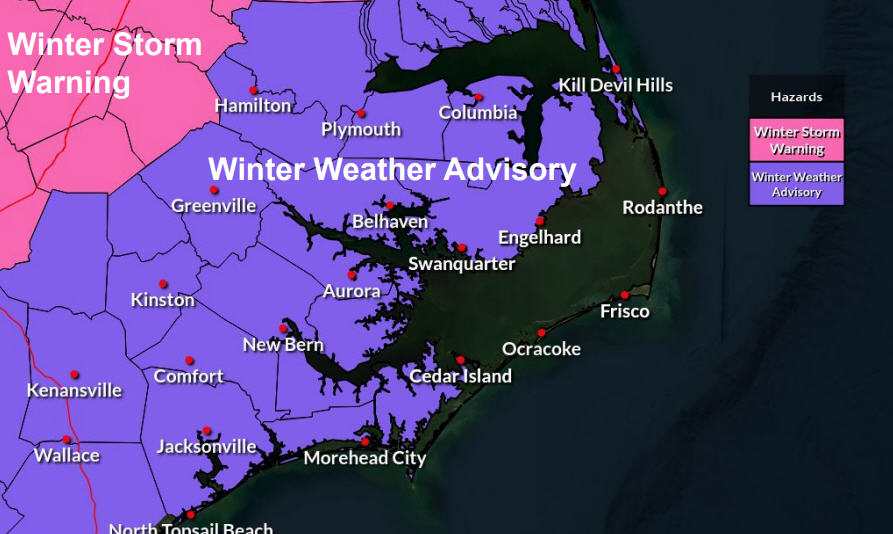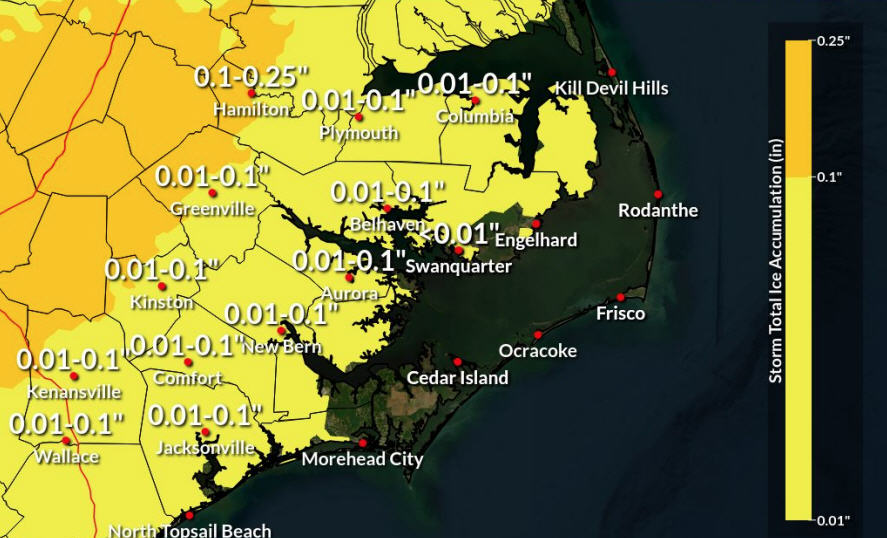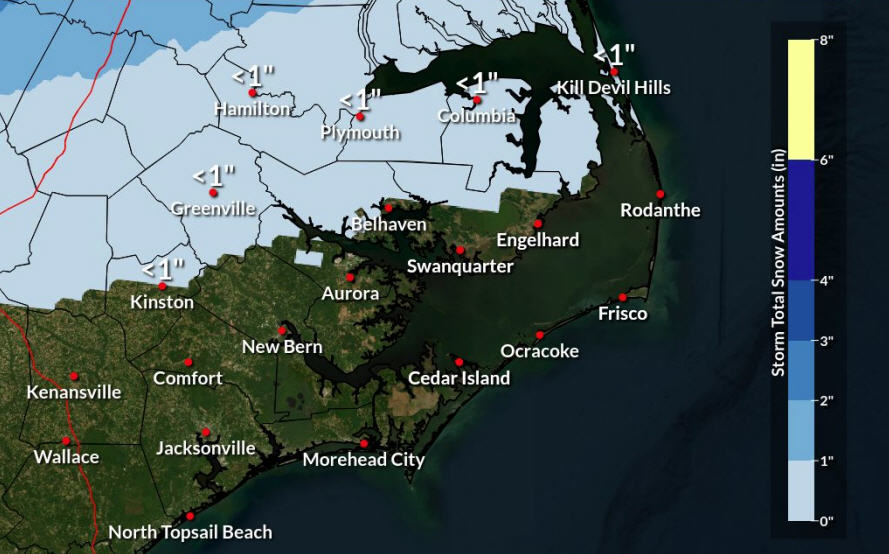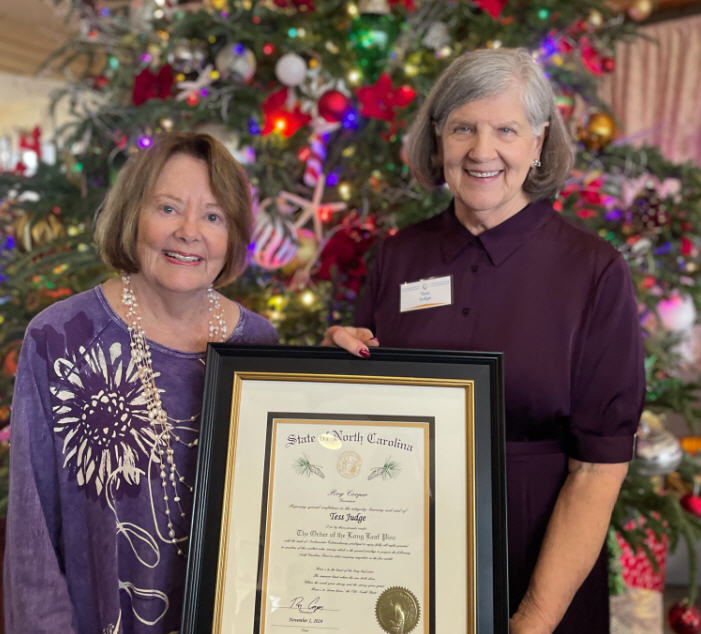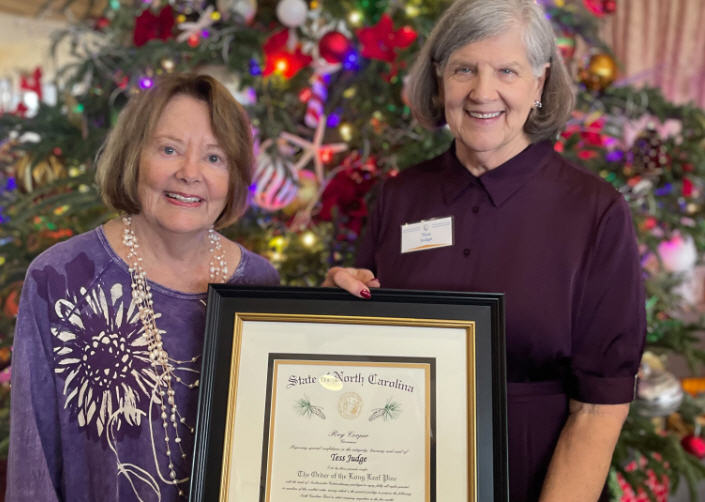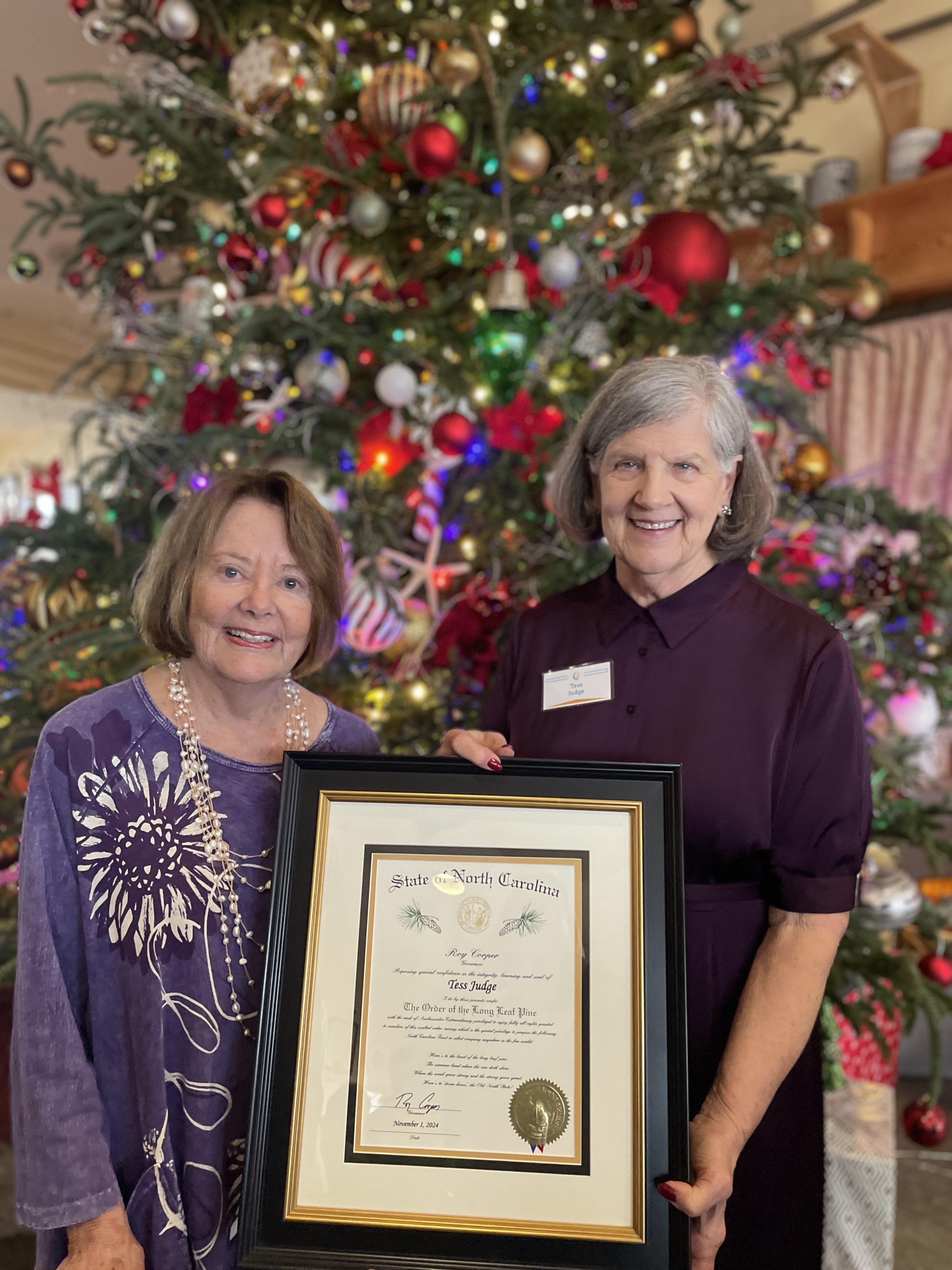Buxton Civic Association pushes for a new wave of community action to clean up Buxton Beach

The Buxton Civic Association (BCA) held its monthly public meeting on Thursday, July 11, and urged attendees to keep the momentum going by continuing to demand action at Buxton Beach.
An initial email and letter-writing campaign was launched in March, and the BCA is hoping that a second wave of letters, emails, phone calls, and even social media posts will continue to put pressure on the legislators and agencies that can have an influence on cleaning up a roughly 500-yard stretch of Buxton shoreline.

“When this all first started, what really got things going was getting people sick of hearing from you,” said Board Member Heather Gray Jennette at the meeting. “I think hearing from a community and letting them know that ‘you might have forgotten, but we haven’t’ is going to be what generates faster action.”
“Things are happening right now, but it’s a super frustrating ‘hurry-up-and-wait’ process,” she added. “And until they get tired of us beating their electronic doors down, that’s where it’s going to stay. So, what we’re hoping is to have another round of letter writing, email writing, or phone calls.”
A small section of Buxton Beach has been closed since September 2023 after two offshore hurricanes brushed the Outer Banks, exposing abandoned infrastructure from the site’s former military base, as well as occasional petroleum smells.
The consensus by stakeholders is that there are two agencies – the U.S. Army Corps of Engineers (Corps) and the U.S. Coast Guard – who are responsible for the left-behind debris, and for cleaning up the shoreline. The petroleum smells and petroleum-contaminated soils (PCS) fall under the U.S. Army Corps of Engineers’ Formerly Used Defense Site (FUDS) program, as the former Buxton military base was declared a FUDS site in 1998.

Even though exposed infrastructure and petroleum smells have been a sporadic issue since the fall of 2023, it wasn’t until a big community outcry in February and March that the issues gained local and even national attention.
Several public meetings were held in the spring, including a meeting hosted by the National Park Service in March and a meeting hosted by the Corps in May, and the Corps began to take steps to foster better communications with the local community, which included the future formation of a Restoration Advisory Board.
According to a Corps’ 1998 Procedures Manual, as well as a 2007 Handbook from the U.S. Secretary of Defense, the purpose of a Restoration Advisory Board (RAB) is to create a line of communication between local communities and the agencies responsible for cleaning up sites that were previously used by the Department of Defense (DoD).
The ball is slowly rolling for the Buxton RAB to form, but it may take a few months for the RAB to come to fruition.
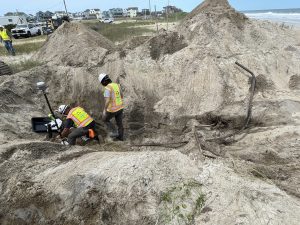
Back in May, the Corps also took the first remediation action since the shoreline closed in 2023 by removing an exposed 80-foot-long pipe that was thought to be at least one source of petroleum. The Corps also performed soil sampling in the immediate area, although the results from these tests may not be available for at least 60-90 days from the May testing date.
Meanwhile, the National Park Service (NPS) conducted its own independent testing on May 24, after the pipe was removed. These tests were sent to a third-party laboratory, Environmental Chemists, Inc. The results were returned to the NPS from the North Carolina-based lab on June 27, and stated that petroleum contamination in the immediate area was still above state action levels.
Following the spring meetings, the initial steps towards a Restoration Advisory Board, and the pipe removal, however, the current actions by the Corps and the U.S. Coast Guard are all focused on slow and steady testing.
On June 24-28, the Corps sent a team to the Buxton area to conduct geophysical work in order to identify any potential fuel distribution components, such as pipes or fuel tanks, that still remained under the surface.
“Identifying the anomalies can assist us in determining what areas we need to conduct soil sampling,” said Cheri Pritchard, Media Relations Chief for the Corps’ Savannah District. “The results of the geophysical work will assist with drafting the sampling plan that will be used in the comprehensive sampling efforts. The contract to perform this additional comprehensive sampling work is anticipated to be awarded in October 2024.”

In other words, the results of the June geophysical work will lead to more testing plans in the fall. But even if a number of underground structures are found – in addition to the known abandoned structures – this doesn’t guarantee that the above-ground and underground debris will be removed.
Per the Corps, while the FUDS program can address environmental hazards like petroleum smells and sheens, it cannot be used to excavate and remove the leftover remnants of the military site unless they are directly identified as a source of petroleum.
The consensus among the community and multiple stakeholders urging action at Buxton Beach is that this presents a big logical gap when it comes to responsibility. Basically, the issues that have resurfaced over the past 10 months should have been properly and fully addressed roughly 40 years ago, based on the conditions set in a 1956 Special Use Permit issued by the NPS to the Navy. The permit allowed the military to borrow the National Seashore property as long as it was fully returned to its natural condition once the military no longer needed the site, but this didn’t happen.
For example, the Environmental Assessment and Finding of No Significant Impact for Defense Environmental Restoration Program from July 1985 outlines the demo work required for the former military site, stating that “The project involves demolition of 2 concrete buildings, foundations and attendant fences, and pavements.”
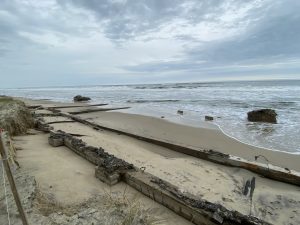
One of these two buildings was the Terminal Building, and according to a 1986 Army Corps of Engineers statement of work for demo and removal of buildings, utilities, etc., the required work was completed. However, as evident during a number of winter and spring storms, the foundation of the Terminal Building was not fully removed.
The path to full remediation is long and unclear, and this muddled and lengthy process is the backbone reason why the BCA wants the community to create a new and resurgent outcry.
“Our next action item is to make some noise again,” said Heather Gray Jennette. “This all started in March and things seemed to really go somewhere, but now it’s summer, and the beach is covered up again, and everybody’s busy with other things, and we’re waiting on test results because we’re always waiting on test results.
“We’re in this cycle, and the only way we feel like we can break out of it is to make noise.”
Hatteras Island County Commissioner Danny Couch was also in attendance at the July 11 meeting, (as was Commissioner Candidate Aida Havel), and Couch stated that with a heated election season, now was the perfect time to force legislators and elected officials to listen.
“You guys are making a difference… I will always give the BCA credit for what is going on,” said Couch. “There are two things that bureaucrats hate, and that’s interference from legislators, [and interference] from the public. The public has a lot of clout.
“I would encourage you to think ‘The clock’s ticking… We started this a year ago, and we’ve gotten a lot of word love, but where’s the action?’ There has been some activity going on [at Buxton Beach] but is this situation resolved? No, it is not.
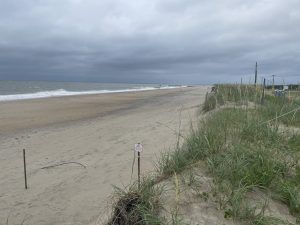
“As [Board Members] Brian and Heather and Wendi and others have said all along, if you want to get some traction, you’ve got to be the squeaky wheel. They want to hear from people, they want to hear from voters… and I encourage you to keep the pressure on.”
Hoping that the community would follow their lead, the BCA took steps to make the letter-writing campaign easier by providing an email contact list as well as a draft letter that community members could borrow from, or copy and paste directly.
“They did nothing until all [the environmental problems] started showing up, and people were screaming out… Even then, it took from February until May for people to listen to us and do something,” said Board Member Wendi Munden.
“And that’s part of our reasoning for ‘Let’s have another round of this.’ Because we’re in that summer wall, and they’re not really hearing from us, and they should be.”
For more information on Buxton Beach, and how to get involved
- For a contact list from the BCA, click here. (Click here for the contact list in Word format.)
- For sample letter templates to send to the stakeholders involved, click here for a letter template drafted by Deb Hoyt, and click here for the letter template drafted by the BCA. (Click here for the BCA’s letter template in Word format.)
- For additional letter-writing tips and guidelines stemming from the March email campaign, click here.
- The Buxton Civic Association meets the first Thursday of every month at the old Buxton Volunteer Fire Department building beside Burrus Field. Developing info from the Buxton Civic Association (BCA) can be accessed via the organization’s new website at BuxtonCivic.com or through the BCA’s official Facebook page.
- Remember that while the environmental issues at Buxton Beach are considered to be a public safety and environmental hazard, just three-tenths of a mile of the shoreline is closed, out of 75 miles of National Seashore. In short, the public can still visit and enjoy Buxton, and Hatteras Island in general. The primary concern is that this issue needs to be addressed now, before it potentially becomes a larger problem.
